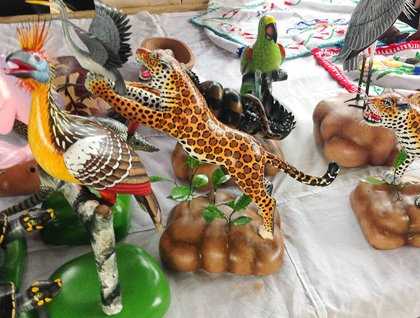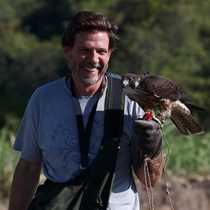For the second day of our expedition, we traveled up the Marañón River to a place called Amazon Natural Park. We walked through this private reserve and marveled at the series of suspended bridges.
We got an entirely new perspective of the jungle from above. Along our way, the local guides found an anaconda that was about three meters long. We also learned more about many interesting medicinal plants of the jungle and how they are used.
Listening to the numerous legends and local beliefs was another important part of the cultural aspect of visiting the Peruvian Amazon.
Not too far from the park, we visited a community called San Regis. We learned about life in the Amazon, and got to see the school, the police station, and even the small building that serves as a temporary jail. San Regis is a community of around 2,500 people, and it is located on the buffer zone of the Pacaya-Samiria Reserve. In traveling to remote places like the Upper Amazon, it is interesting to learn how people live here, and to get to interact with them.
The purpose of our visit was to meet with the representatives of the organization Minga Perú. Minga means community work, and it is a local word from the department of Loreto (a department is the equivalent of a state in Perú).
We were greeted by Emira Montes, who is the Iquitos representative of the non-governmental organization Minga Perú and had traveled from Iquitos to meet with us. We heard the testimonials of men and women, and gave us a better understanding of the role of the NGO that we support.
We ended the day with yet another wonderful dinner prepared by our skilled and refined galley crew. After dinner we watched an amazing documentary about the underwater life of the Amazon River.







